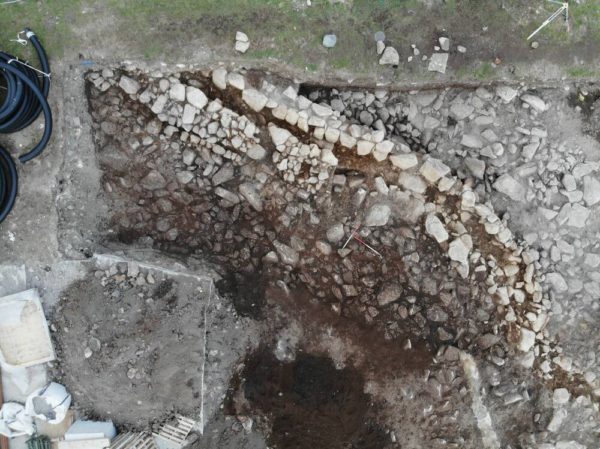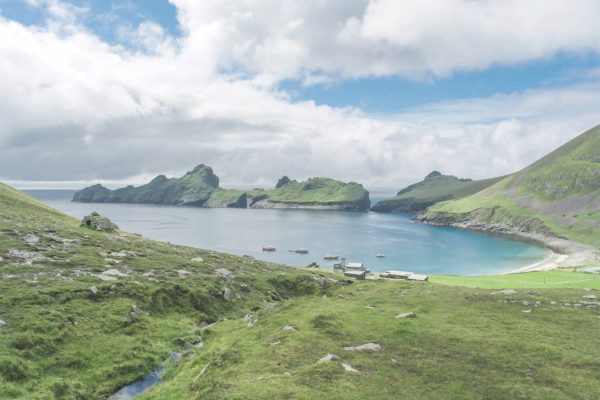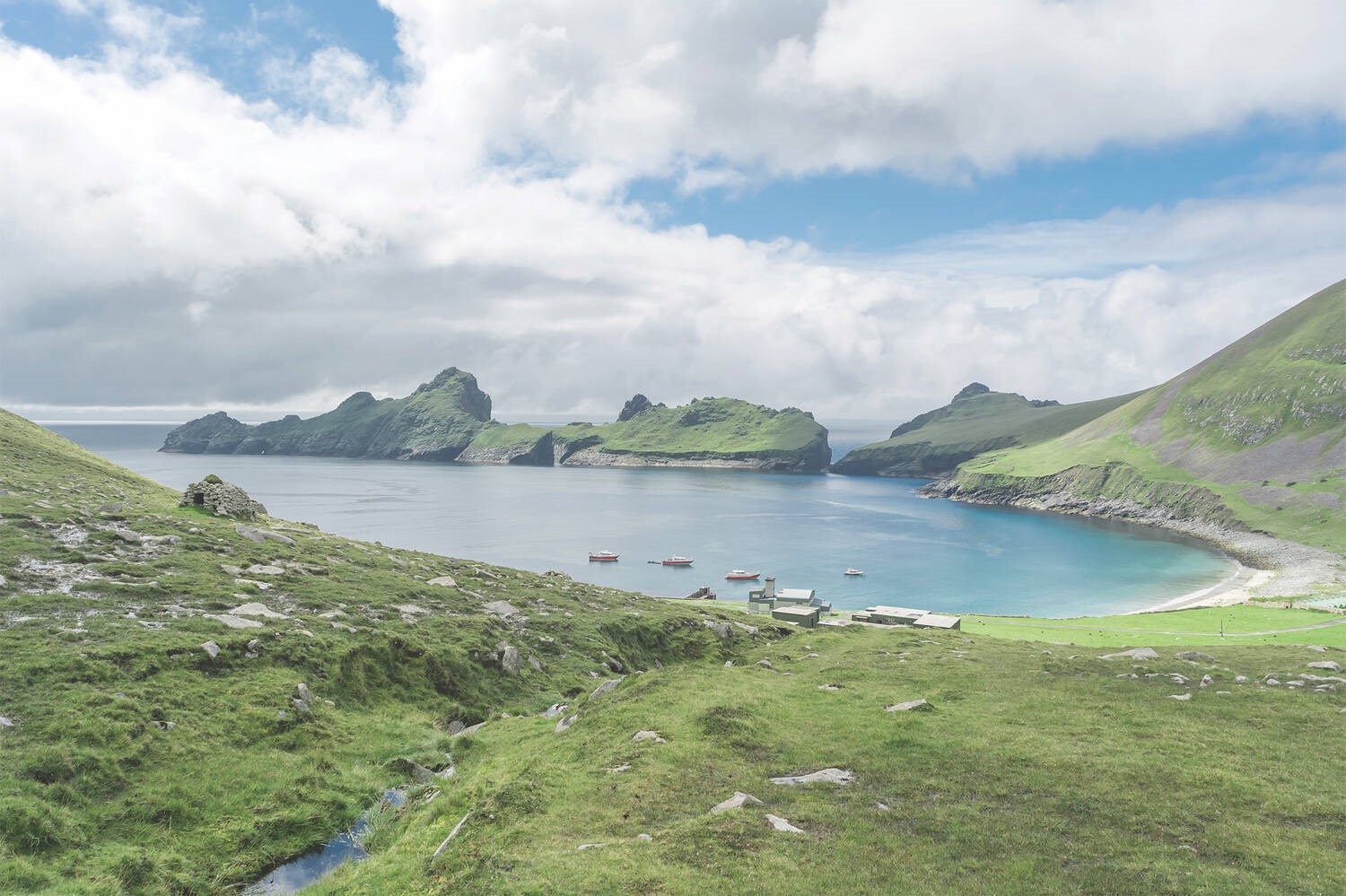
General view of the site (© GUARD Archaeology Ltd).
Newly published research has revealed how archaeologists discovered evidence of inhabitation over 2,000 years ago on St Kilda. Archaeological investigations were carried out between 2017–19 by GUARD Archaeology, who were contracted in preparation for the development and refurbishment of the Ministry of Defence (MoD) base on the archipelago’s main island of Hirta. This resulted in the largest archaeological excavation ever undertaken on the island, which revealed traces of inhabitation on St Kilda over 2,000 years ago during the Iron Age.
The island group of St Kilda, a UNESCO designated dual World Heritage Site, is situated c40 miles west of the Outer Hebrides. The islands are all that remain of an eroded volcano that was active during plate tectonic movements and the creation of the North Atlantic Ocean around 55 million years ago. The excavations took place in the south-west of the main island of Hirta, overlooking Village Bay.
Iron Age

Radiocarbon dating of carbonised food remains adhering to sherds of pottery that had been washed into a stone channel indicates intensive inhabitation nearby at some point between the early part of the 4th century BC to almost the end of the 1st century BC. Most of the pottery recovered dates from the Iron Age, although a sherd of a possible early Bronze Age Beaker and two sherds of medieval pottery were also found. The pottery assemblage demonstrates the land in the vicinity of the excavated area was subject to occupation from at least the Bronze Age.
Alan Hunter Blair of GUARD Archaeology, who directed the excavations, said: “The recent archaeological work has revealed that the eastern end of Village Bay on St Kilda was occupied fairly intensively during the Iron Age period, although no house structures were found. The presence of large quantities of Iron Age pottery across the site suggests settlement must have existed nearby. One of the most significant problems facing archaeologists working on St Kilda is that earlier buildings were dismantled and cleared away in order to build new ones using the old stone as a building resource. Stone was also cleared, including that in burial mounds, to increase the available cultivation area, leaving little trace of what may have been there before. The fact that any archaeological remains survived at all on the investigated area is remarkable given the location of the site on extensively used and landscaped ground. The remote island group of St Kilda has not been immune from change, but understanding what is left allows us to understand the lives of its past inhabitants in a little more detail.”
Tantalising glimpses of life on St Kilda

Susan Bain, Manager, Western Isles said: “These results are very encouraging, that the evidence of very early settlements on the islands can still be identified. We have tantalising glimpses of life on St Kilda 2,000 years ago, not only from their pottery but also the remains of a souterrain, or underground store, that was discovered in the 19th century. These few clues tell us that people were well established on St Kilda as part of the wider settlement of the Western Isles.”
Chief Executive of the National Trust for Scotland, Phil Long, added: “St Kilda is a place that has proved to be deeply fascinating to people the world over. Much of that is to do with the pathos of the evacuation of the last St Kildans in 1930, but we now know from these archaeological findings that their story goes much further back in time than previously understood. This further adds to the knowledge and evidence that justifies St Kilda’s special status and the need for our charity to continue to raise funds to provide for its study, conservation and protection.”
The archaeological work on St Kilda was commissioned by QinetiQ working on behalf of the MoD. ARO42: Hirta, St Kilda by Alan Hunter Blair is freely available to download from the ARO website: https://archaeologyreportsonline.com/publications.html
Text and images are courtesy of the National Trust for Scotland. For more information on the Trust or to help them protect Scotland’s heritage see: www.nts.org.uk

